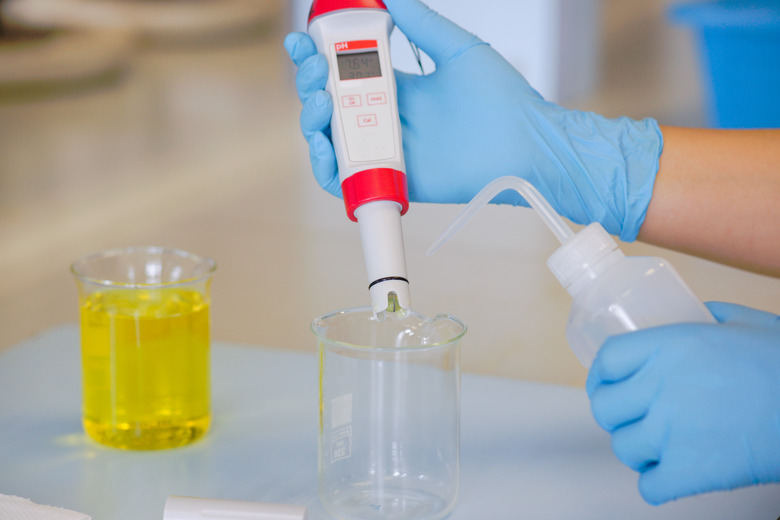How To Adjust pH Levels
Every liquid, from the orange juice you drink at breakfast and the water in your fish aquarium to the blood running through your body, has a measurable pH level. To adjust pH levels, you must first determine the pH level you have and the pH level you want to achieve. Then, add either an acidic or alkaline substance to the liquid.
Meaning of pH Level
Meaning of pH Level
The pH (potential of hydrogen) level of an aqueous solution refers to how acidic or alkaline (basic) it is, based on its hydrogen ion concentration. Solutions with a high concentration of hydrogen ions have a low pH, and solutions with low concentrations of H+ ions have a high pH. The pH scale is a numeric scale, running from 0 to 14. On this scale, a pH level of 7 indicates neutral (neither acidic nor alkaline), a pH level less than 7 indicates acidic, and a pH level greater than 7 indicates alkaline. The equation that defines pH is:
pH=-log[H+] concentration
In other words, the pH is equal to minus the log of the H+ concentration. A difference of one pH unit (from pH 8 to pH 9, for example) is a tenfold difference in H+ ion concentration.
Adjusting pH in Water
Adjusting pH in Water
Pure or distilled water has a pH level of 7, which means it is neutral. If you want to increase the pH of water, you must add an alkaline substance, such as baking powder, to it. If you want to decrease the pH of water, you add an acidic substance, such as lemon juice, to it.
As an example, it's important to keep pH levels steady in the water in an aquarium because even minor changes to pH can have severe health effects on fish. A high (alkaline) pH can affect a fish's gills and can be fatal. A low (acidic) pH can increase toxic elements in the aquarium, lead to eye damage and hyperplasia (thickening of skin and gills) and can also be fatal. Never make large, sudden changes to the pH in an aquarium. Adding 1 teaspoon of baking soda per 5 gallons of water is a safe amount for tiny increases if the pH is too low. Put peat moss into a mesh bag and add it to the filter to gradually lower a dangerously high pH.
Adjusting pH in Other Solutions
Adjusting pH in Other Solutions
You can adjust the pH in any solution in a science lab or at home if you have the right equipment. First, fill a beaker with your solution. Insert a stir bar, turn it on, and keep it on throughout the whole process. Test the initial pH of the solution with a pH meter following the manufacturer's directions for use. In most cases, you insert the meter's glass electrode in the solution, wait up to 30 seconds, and then read the pH level displayed. Compare the actual pH with the desired pH. If the pH is higher than desired, adjust it using a hydrochloric acid solution. If the pH is lower than desired, adjust it using sodium hydroxide solution. Fill a plastic pipette with the correct solution, add a few drops to the solution in the beaker and wait at least 20 seconds before reading the pH on the meter. If you need to adjust the pH further, add more of the solution until you achieve the desired pH.
Cite This Article
MLA
Gillespie, Claire. "How To Adjust pH Levels" sciencing.com, https://www.sciencing.com/adjust-ph-levels-5144744/. 26 April 2018.
APA
Gillespie, Claire. (2018, April 26). How To Adjust pH Levels. sciencing.com. Retrieved from https://www.sciencing.com/adjust-ph-levels-5144744/
Chicago
Gillespie, Claire. How To Adjust pH Levels last modified March 24, 2022. https://www.sciencing.com/adjust-ph-levels-5144744/
